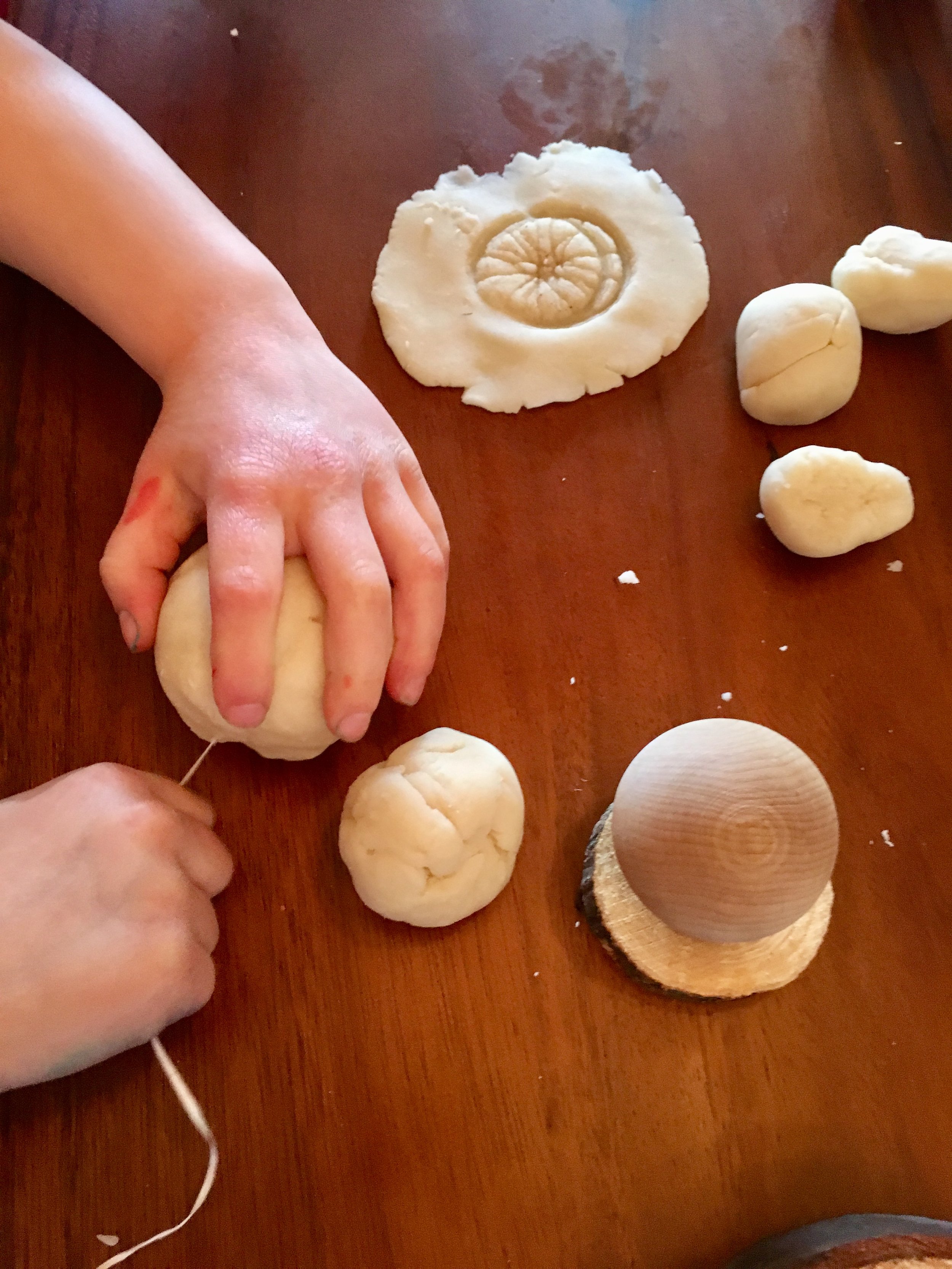One day a woman visited my preschool classroom to observe and offer professional development. At snack time she sat with the children and told them a story. This classic tale, The Apple Star Story, is about a boy searching for a little red house with no windows, no door, and a star inside. As she neared the end of the story she cut the apple in half to reveal the star. The children around the table gasped and pointed excitedly as they realized a star could be found inside an apple.
Thinking back on this memory, I realized the important connection to Geometry. Children need to be taught that 2D shapes lie within 3D shapes. Experiences that involve creating, feeling, and cutting the 3D shape help children develop this understanding.
PLAYFUL INVITATION
1. Prepare: This playful invitation uses playdough or clay as the material for creating shapes. The recipe I used is listed below. Also, gather an assortment of round shaped items (both flat and solid) and a dull knife or piece of string.
Observe the child throughout the interaction. Use the Invitation to Play Documentation Toolto collect data.
2. Invite: Show me how you make a shape round like a ball. Show children acorns, rocks and other round shapes as inspiration.
3. Play: As the child works talk to him/her about the balls they are rolling and how they are 3 dimensional shapes, called spheres. Ask if they can name other things that are spheres. Have the child roll the playdough on the table or in the palm of their hand. Working with playdough and clay has the added bonus of strengthening muscles in the hand, important for fine motor control.
Once you have a solid round shape, ask the child to cut it in half. Model how to use a dull knife or piece of string. Open the halves and look at the flat face inside the sphere. Talk about how this shape is a circle (or maybe an oval that you can adjust into a circle). Next, make flat circles. Talk about 2 dimensional shapes.
4. Reflect and Assess: Did the child notice the difference between the 3D spheres and the 2D circles? What math language are they already using? And what language are they ready to develop? What else did the child create with the play dough?
Ready: The child is ready for this playful invitation when she/he is a toddler. Even if the child can only squish the clay, an adult can model how to create circles and spheres.
Extend: Try making cylinders and talking about the flat faces on each end. These are circles too! Use the clay to form other 2D and 3D shapes. Children will learn sphere, cone, cylinder, cube, pyramid and rectangular prism in the early years of school.
Play dough Recipe:
2 cups all-purpose flour
1 cup salt
2 tbsp cream of tartar
2 cups lukewarm water
2 tbsp of oil (vegetable, corn, canola)
Stovetop pot (I prefer nonstick)
Begin by stirring together the flour, salt and cream of tartar in the pot. Next, add the water and oil. Stir. Cook the mixture over medium heat, stirring constantly. The dough will thickened and form into a ball. Remove from heat and allow to cool. Knead until smooth. Store in a plastic bag or container for a few weeks.













